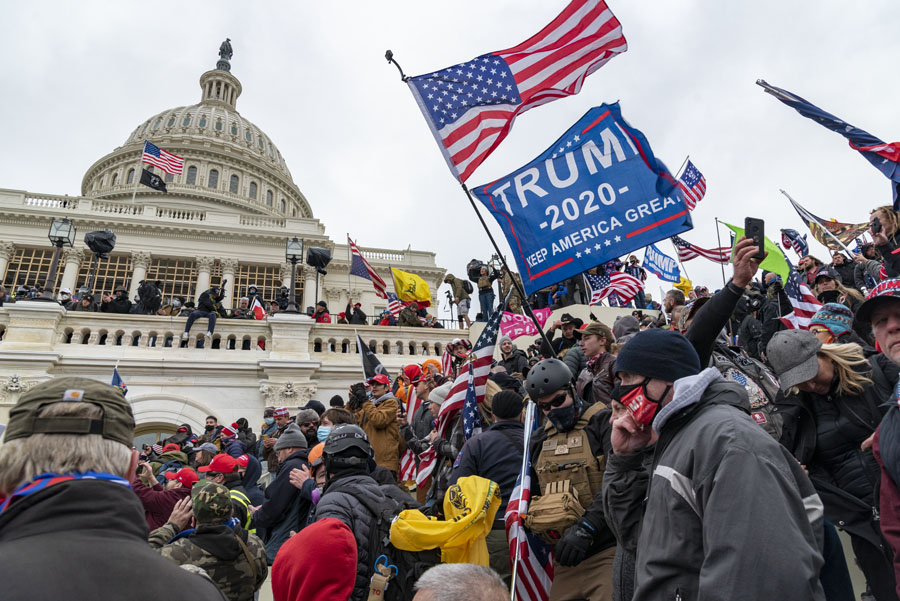We Should Have Seen the Attempted Assassination Coming

Published by The Lawfare Institute
in Cooperation With

The assassination attempt of former President Donald Trump on Saturday was not a surprise to anyone paying attention. By almost every measure, the warning bells were sounding at a decibel level that should have been audible from the cosmos. But like Ellen Ripley on the Nostromo or academics in the field of terrorism studies, in space, no one can hear you scream. For some of us, it sometimes felt like we’ve been yelling in the vast void for more than a year. The attempted murder of a former president should be a wakeup call. Threats against public officials have been steadily rising for some time.
A review by National Counterterrorism Innovation, Technology, and Education Center (NCITE) and Chapman University found that we’re in a precarious time for our democratic norms. From 2013-2016, there was an annual average of 38 federal charges involving threats to public officials. But since 2017, that number steadily rose to about 62 a year. The targets of threats have been varied, from law enforcement, to federal judges, to congressional candidates. Former President Trump has not been immune to the disturbing phenomenon. Last year, a Chicago woman was arrested for threatening to murder him and his young son, Barron. Other conservatives have also been targeted by left-wing extremists, be it a federal judge that ruled restricting an abortion pill or a former colorful New York congressman under indictment for wire fraud. Though to be clear, threats are by no means limited to those targeted towards Republican leaders, as seen in sharp relief by the attack on Speaker Nancy Pelosi’s husband. Indeed, the vast majority of those arrested on federal threats charges that have an ideological bent tend to veer towards right wing racially motivated violent extremism, with a particular focus on misogyny.
In the attempted assassination case, the suspected shooter, Thomas Crooks, age 20, is unique in the world of threats to public officials. Crooks is 20 years younger than the average age of 40 for individuals who typically make threats to public officials. Early reports also indicate that Crooks did not hit law enforcement radar, contrasting with the 69 percent of typical threats offenders who have a documented criminal history.
Despite these important departures, some aspects of the Trump assassination attempt seem in line with previous trends. Through an initial law enforcement review of Crooks’ electronics, it does not appear that he left behind a manifesto or an online footprint that would point to an ideological persuasion. Certainly the target, former President Trump, can be an indication of ideology itself. However, the lack of a clear cut motivation is in keeping with the larger data behind those arrested for threats against public officials. More than half of the 503 individuals arrested on federal charges involving threats to public officials did not present an ideological bent. While we search for answers, sometimes the least satisfying is the most likely. Unfortunately, there is the Joker effect: some people just want to watch the world burn. If the investigation progresses to that determination, it would have significant parallels to the 2017 mass shooting in Las Vegas.
Regardless of how the investigation shakes out, it is clear that the tempo of threats is straining our democratic system. Twelve of the fifteen top election officials in Arizona have quit, citing, in part, rising threats. The U.S. Capitol Police, which is tasked with protecting elected officials in Congress, noted that they had identified more than 7,500 threats in 2023 alone. Last year, which was already a record year for threats that resulted in federal arrests, is about to be eclipsed by 2024, with months still left on the calendar.
There are tangible and intangible solutions to the issue of rising political violence. An after-action review of U.S. Secret Service procedures will undoubtedly identify shortcomings in their protection approach. Congressional hearings will hopefully uncover and advance additional legislative fixes. The Justice’s Department’s Election Threats Taskforce will likely go into hyperdrive in the coming months. An increase in resources to law enforcement, already strained by the tempo of this year and who are tasked with protecting our public officials, can have immediate results.
All are important steps. But the greatest one may be the most illusive in this polarized age, we should heed President Biden’s request to “lower the temperature in our politics.” A call that should be heard, even from space.


.jpeg?sfvrsn=6117c6bf_4)

